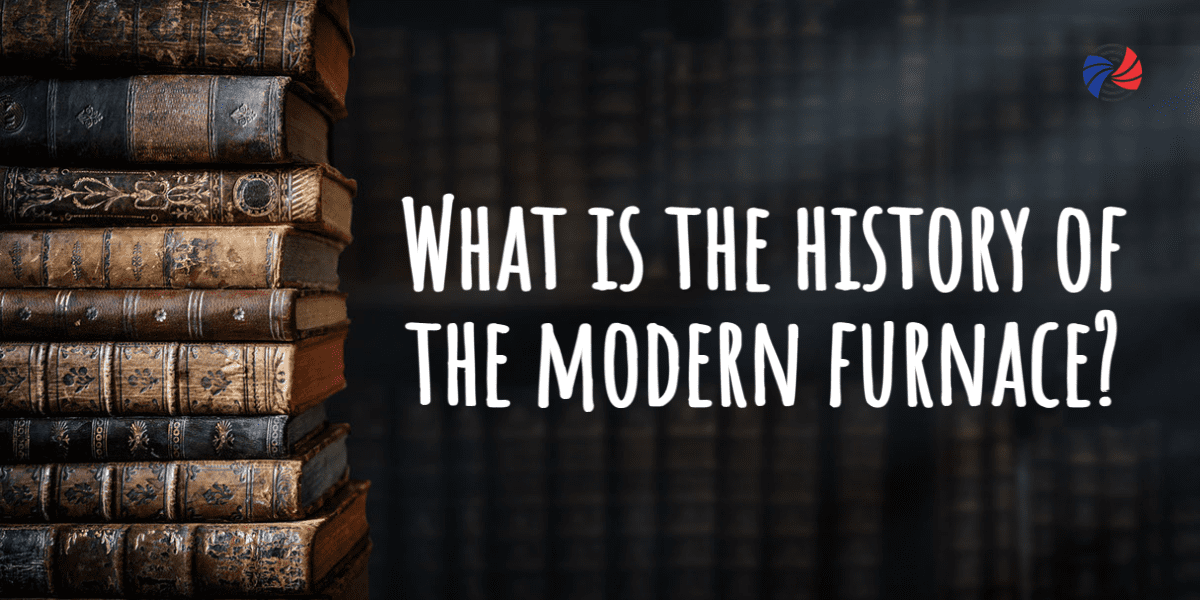The hardships we face as humans to achieve our basic needs have been critical for survival. However, challenges consistently occur, and we must equip ourselves for adversity. The strength of nature can prove to be relentless at times. Therefore, protecting ourselves from Ohio’s unpredictable climate can be crucial. When you have loved ones, the duty to care and ensure a dependable means for maintaining warmth during intolerant temperatures is paramount. When looking back to our ancestors, I now contemplate what caregivers must have endured when securing a heat source for their families. I am bursting with thanks for the technological advancements in the Heating & Cooling universe! At Kettering-Oakwood Heating & Air, we would love to offer you a brief history of the modern-day furnace to understand better the path that was paved to get us to the here and now. Let’s take some time to look back together to understand better how our HVAC systems arose into what they are today.
How Did Early Civilization Keep Warm?
Use and control of fire were not as direct as you may envision. Still, vast amounts of academic evidence show how humans labored to control fire through microscopic traces of wood ash dating back some 1,000,000 years ago. Amazing! As much as I love snuggling up next to a fire, I can’t even begin to fathom how complicated this must have been as a family’s sole source of heat. Today, we reside in a civilization where we can enjoy a cozy fire without relying on it as our immediate heat source, and for that, I am forever thankful!
When Did the Cast Iron Radiator Come Around?
We began to see patents for cast iron radiators’ evolution and mass productions erupting for all to see in 1841. Cast iron radiators convert water into steam, heating the air through radiation and convection (hot air rises as cold air descends). But alas, this method is tedious, resulting in depletion in effectiveness to keep warm while surviving the harsh temperatures amongst the months of winter.
Who Developed the Bunsen Burner?
The bunsen burner is a gas burner that operates an exposed gas flame for heating, purification, and combustion. The burner, named after Dr. Rovert Bunsen in 1855, successfully generates gas, propane, and oil-fired heating systems. But unfortunately, a gas heater reaching its last life will not function efficiently or distribute heat evenly. As a result, this method will have you and your family wasting lots of money at the end of the day. And, honestly, no one wishes to spend more for less.
When Was Electricity For Heat Generated?
In 1883, Thomas Edison changed electrical energy into heat energy when he generated the electric heater. Then in 1905, Albert Marsh, although not as well known, uncovered the alloy chromel. Chromel is derived from nickel and chromium and is more efficient than various heating elements, securing the ability for long-lasting high-resistance wires to establish a reliable heating element. Many people understood this to be the true origin of electrical heating. Now, I don’t want to appear grim, but I don’t want to be dismissive either. Devastatingly enough, too many people still perish in fires due to electrical heaters. If your home’s electrical heater is beyond its prime, you must seek help from our experts, respectfully. This uncertainty for disaster is why I will be relinquishing my heating and cooling demands to the professionals at Kettering-Oakwood Heating & Air.
The Central Heating System Was Patented When?
Alice Parker first patented the central heating system in 1919, creating the potential for humans to change the temperature of their homes with efficiency and more effective results. A central heating system directs warm air throughout the totality of one’s home interior. The heat broadens from a single location to numerous encompassing areas. When combined with other methods, we can set our indoor climates to our preference. The central heating system is highly proficient compared to fire alone!
What is the Significance of the Modern Day Furnace?
The modern-day furnace operates by circulating hot air throughout the household. As a bonus, the newest and most popular models can be synced to our smart devices, allowing us to alter our home’s atmosphere right at our fingertips. If your furnace is 15 years old, has an extensive history of repairs, or the expense of restorations has depleted your bank account, do not be weary! At Kettering-Oakwood Heating & Air, we are eligible and excited to assist you in installing and replenishing your old furnace with a more energy-efficient, custom, contemporary option. Do not waver to contact us because failing to have a trained professional install your furnace leaves the possibility for error resulting in a shorter lifespan for your furnace. Prevent the preventable!
Kettering-Oakwood Heating & Air hope you learned something new with this quick reading of the history of the modern furnace and, as a result, find peace in knowing that we can and will thoroughly support you with your family’s heating & cooling needs! We are eager to hear from you! Call us today at (937) 502-3842, or schedule an appointment online now by clicking here!






